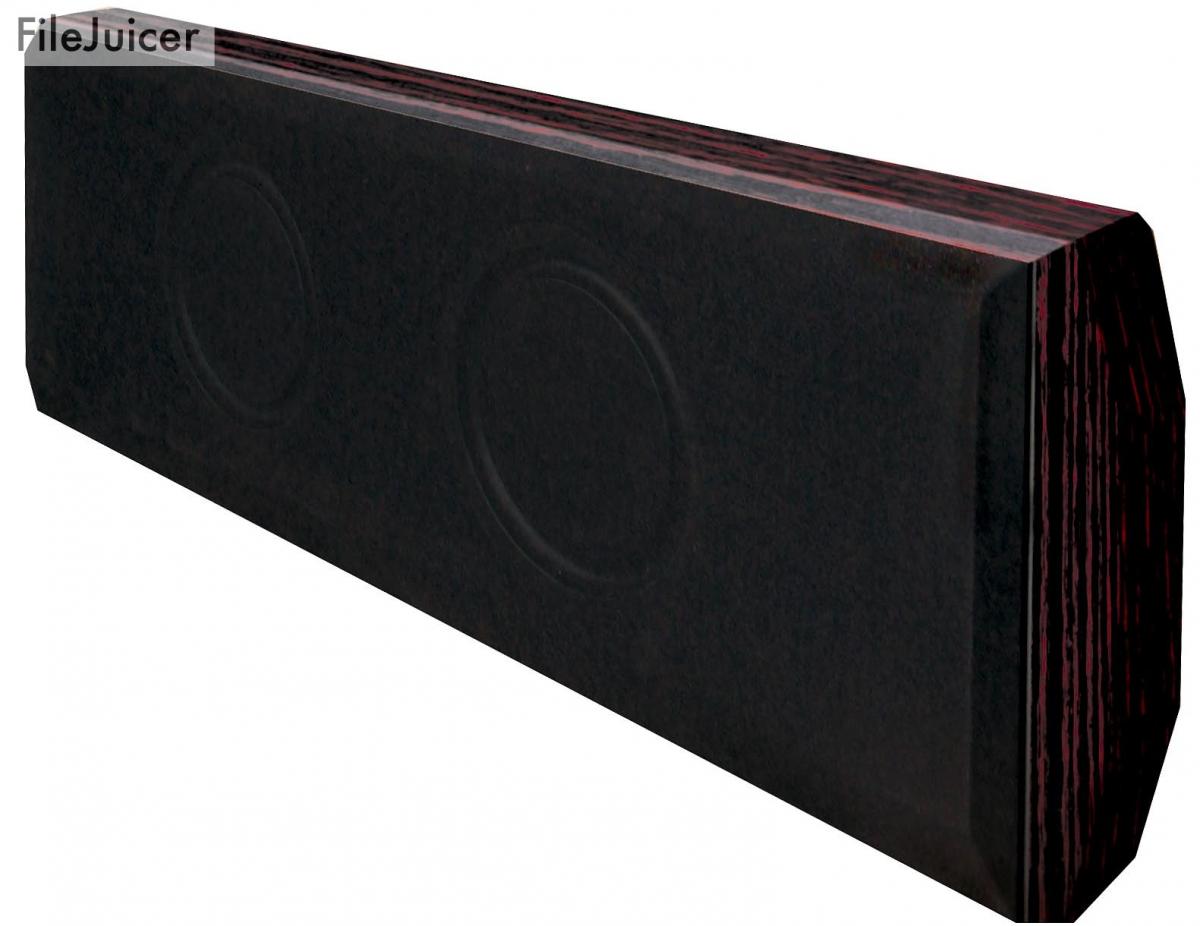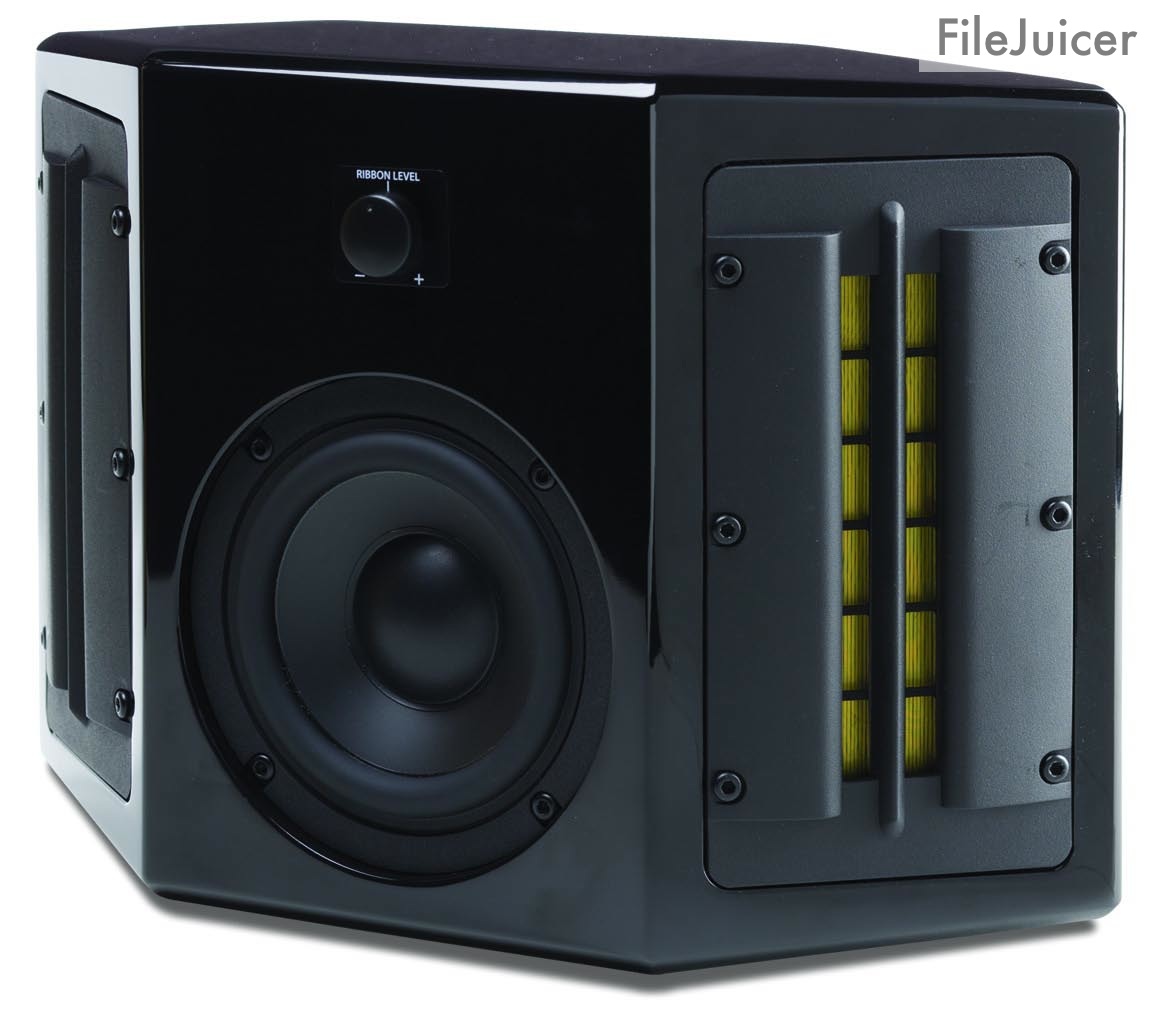
Sunfire is led by the iconoclastic inventor, physicist, and authentic audio legend Bob Carver, whose fertile imagination has, since the 1970s, been producing groundbreaking, and often imitated, A/V component designs. Carver, for example, first whetted audiophiles’ appetites for truly big wattage with his mammoth 1970s-era Phase Linear 700 power amplifier, but later demonstrated high-powered amps could fit in very small packages. He’s a man who has developed numerous circuits (such as the aptly-named “Sonic Holography” circuit) that improve sound quality in unexpected ways and who started the movement toward small but potent cube-shaped subwoofers with his famous Sunfire True-series subs. But one of his most famous creations was the six-foot-tall Amazing Loudspeaker (yes, that was its actual name), which pushed the envelope of hybrid ribbon-type loudspeaker design. And when it comes to invention and innovation, Carver shows no signs of letting up yet.
About a year and a half ago I met with Bob Carver to talk about an exciting product that, at the time, was still under development: namely, an extremely compact satellite/subwoofer speaker system that—Carver promised—would rival if not surpass the performance of his original Amazing Loudspeaker (a tall order for any speaker system to fill). The result is the Sunfire Cinema Ribbon speaker system reviewed here.

Features
Our Cinema Ribbon system came with a set of three tiny, two-way, three-driver CRM-2 satellites for use as L/C/R speakers, a CRM-2BIP bipolar surround speakers and an SRS-210R SubRosa subwoofer with its companion SubRosa 2700EQ outboard subwoofer amplifier.
The diminutive, 8.25-inch-tall CRM-2s feature two side-firing 4.5-inch mid-bass drivers that handle all frequencies from the upper bass region on up to about 1500Hz, plus a single, forward-firing, waveguide-loaded ribbon tweeter that handles output from 1500Hz on up. Interestingly, the side-firing drivers work together as an omnidirectional array (meaning sound radiates evenly in a 360-degree pattern), which Sunfire says helps “enlarge the sense of acoustic space, in all dimensions.” The ribbon tweeter, in turn, is derived from the design of the almost 6-foot-long ribbon driver used in the original Amazing Loudspeaker but with the ribbon surface cleverly folded to fit within a housing that is only a few inches tall. Despite its small size, the CRM-2 carries a maximum output rating of—get this—115dB, which is extraordinary (frankly, if you tried to get 115dB of clean output from most satellites this size, you’d wind up with “loudspeakers flambé”).
The CRM-2BIPs, in turn, each feature two ribbon-type tweeters angled to the sides as a bipolar array, with a single, forward firing 4.5-inch mid-bass driver. An easy-to- use, front panel mounted tweeter level control lets you adjust treble output of the speakers to match the acoustics of your room. The CRM-2BIPs are intended primarily for wall-mount applications, though I found they worked beautifully on stands, too.
Although I opted to use a regular CRM-2 satellite as the center speaker for our system, I should mention that Sunfire also offers a dedicated CRM-2C center channel speaker. The CRM-2C uses the same drivers as the CRM-2, but with the ribbon tweeter flipped on its side and mounted in an acoustic lens said to help improve dispersion and with the two mid-bass drivers firing forward— not to the sides. In principle, the CRM-2C produces a slightly more focused sound on dialog, though its horizontal dispersion (especially of high frequencies) is not as broad as the CRM-2’s. In the end, I chose a CRM-2 for the center because I wanted the front speakers to have identical voicing, and because the CRM-2’s superior horizontal dispersion helps create more seamless surround soundstages. The good news is that Sunfire leaves the choice to you, so by all means hear both models and then pick the center speaker you feel will work best in your room.
Completing the package is Sunfire’s innovative SRS-210R SubRosa subwoofer/amplifier combo. The somewhat unorthodox SubRosa woofer enclosure resembles a thin, 44-inch-long “slab” that houses two extremely shallow long-throw 10-inch woofers. Because the slab is so thin (it’s only 3.5-inches thick), three distinct positioning options are supported. You can place the sub on its back (woofers facing up, with the cabinet beneath a couch or coffee table), rest it on its long side using included feet, or prop it upright against a wall—using a pair of included clamping “cups” that cinch the enclosure to the wall. The outboard SubRosa 2700EQ amplifier fits on a shelf or equipment rack and puts out an enormous amount of power (2700 watts RMS). What is more, the amp also comes with a calibration mic and an automated, four-band room EQ system. To dial in the system, you simply plug in the mic and place it in your favorite listening position, then push the Start button and watch as the amp/subwoofer combo automatically tests itself, then configures a custom-fitted EQ curve that addresses the acoustics of your home theater. Voilà: instant smooth bass response.

Sonic Character
The Cinema Ribbon system has several defining characteristics that work synergistically both for music and—especially—movie playback. First, the CRM-2 satellites, and in particular their ribbon tweeters, do a very good job of reproducing fine, low-level sonic details that do so much to create sonic images, ambience, and mood. Second, the Cinema Ribbons offer smooth, evenly balanced tonal response that is blessed with a gentle, inviting, and almost organic touch of natural warmth. Though quite revealing, these speakers never, ever sound cold or analytical, which is a good thing. Third, the system throws astonishingly deep and wide soundstages that break free from the surfaces of the speaker enclosures with ease— qualities I attribute to the omnidirectional mid-bass drivers used in the CRM-2 satellites and to the bipolar ribbon tweeters used in the surrounds. Guest listeners regularly commented on how open and three-dimensional the system sounded, and some were struck by the fact that individual sounds did not seem to be coming from the speakers at all.” Fourth, the SubRosa subwoofer delivers terrific bass extension and punch, so that it seems to find an extra half octave or so of really low bass that other subs simply miss. Finally, the Sunfire sats, sub, and surround speaker have exceptional dynamic clout, not just “for their size,” but also in a broader sense. The only minor catch was that the system seemed to be somewhat power hungry in spite of its relatively high sensitivity rating. But if you’ve got the watts, the Sunfires will happily clear their little throats and rock the house.
Put all these qualities together and you’ve got a compact system that produces a truly enormous sound, yet one that is also quite refined— especially when it comes to the spatial aspects of music reproduction. More than most systems, the Cinema Ribbon rig transforms the apparent acoustics of your listening room to match the vision of the recording engineer or movie soundtrack designer.

I only noted two drawbacks, both of them minor. First, because the CRM-2 satellites combine omnidirectional mid-bass drivers with directional, forward-firing ribbon tweeters, they can—in a very subtle way—give the illusion of hearing two different (yet compatible) speakers playing in unison. I believe this has to do with the fact that the side-firing mid-bass drivers do the lion’s share of the work in terms of creating those giant soundstages mentioned above, while the forward-facing ribbons supply the vital treble information that helps create focused images within those soundstages. The radiation patterns of those drivers are complementary, yet different. The net result is a very good compromise, but one that leaves the Cinema Ribbon system sounding perhaps slightly less coherent and tightly focused than the best forward-firing systems on the market. Second, I found that the SubRosa subwoofer, though capable of producing exceptionally deep and powerful bass, sounded a little less clear and nuanced than some of the best top-tier subs currently available (for example, the JL Audio Fathom f112 subwoofers that Playback uses as its low frequency references). But trust me on this point: these minor nits pale in comparison to the Sunfire system’s strengths.
Movie Performance
Long term Playback readers know I am fond of using the uncompressed soundtrack of the Blu-ray version of Apocalypto as one of my speaker system tests, but though I’ve watched/heard that film dozens of times by now, nothing could have prepared me for how good it would sound through the Sunfire system. On the spectacular “Reborn of Mud and Earth” chapter, several qualities stood out. The textures of natural sound effects (jungle noises, sounds of underbrush snapping as the hero flees for his life, etc.) were vivid and gripping, yet never exaggerated or overblown. Next, the instruments carrying the soundtrack score, including some very low bass instruments, sounded impressively vibrant and alive. But what really jumped out of the mix were the eerie vocalizations that came to a head with the almost guttural utterance of the phrase “PAAaaaahhhhhh,” which the sound designer uses to signal moments where the hero Jaguar Paw successfully thwarts his murderous pursuers. Thanks to the power of the Sunfire rig, Jaguar Paw’s moment of triumph becomes deeply moving and brings an almost palpable, exultant sense of relief.

Music Performance
Nothing reveals the strengths (or weaknesses) of a surround sound speaker system like a well-made multichannel music recording, and one of my favorites is Steve Strauss’s folk/jazz album Just Like Love [Stockfisch, multichannel SACD]. A particularly revealing track is “Dead Man’s Handle,” where Strauss sings about working overly long hours in hopes of eventually making it home to see his loved one. Interestingly, the main verses and most of the chorus lines of the song have a wonderfully focused, 3D sound that is deliberately broken at the end of each chorus. The record’s producer Günther Pauler applies a spooky-sounding extra layer of reverb as Strauss closes each chorus by singing, “Lord, take me home/ To my baby.” The temporarily punchedup reverb on this line is often striking when heard through most good speaker systems, but it was particularly intense and dramatic on the Sunfire system. The effect was such that the size and the acoustics of the recording space seemed to shift dramatically— —almost giving the sense of traveling through a sort of sonic “time warp”— and then just as suddenly snapped back to normal again. Surround sound just doesn’t get a lot more dramatic than this.
Tags: LIST
By Chris Martens
More articles from this editorRead Next From Review
See all
Oswalds Mill Audio K3 Turntable
- Apr 12, 2024

2023 Golden Ear: Schiit Freya S Preamplifier
- Apr 12, 2024




















